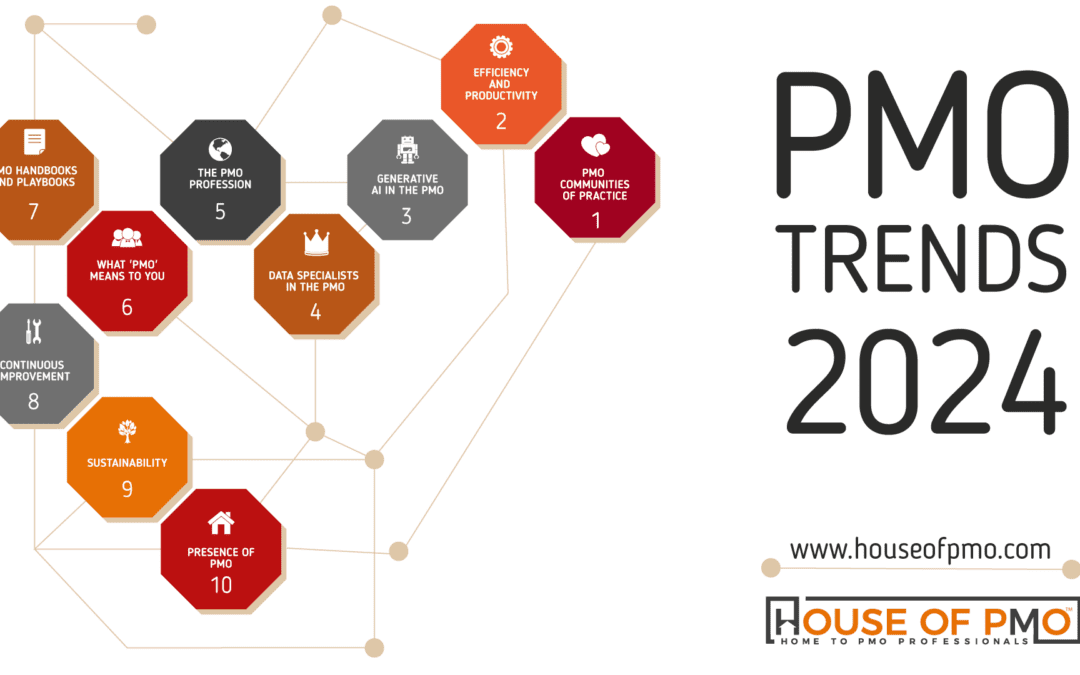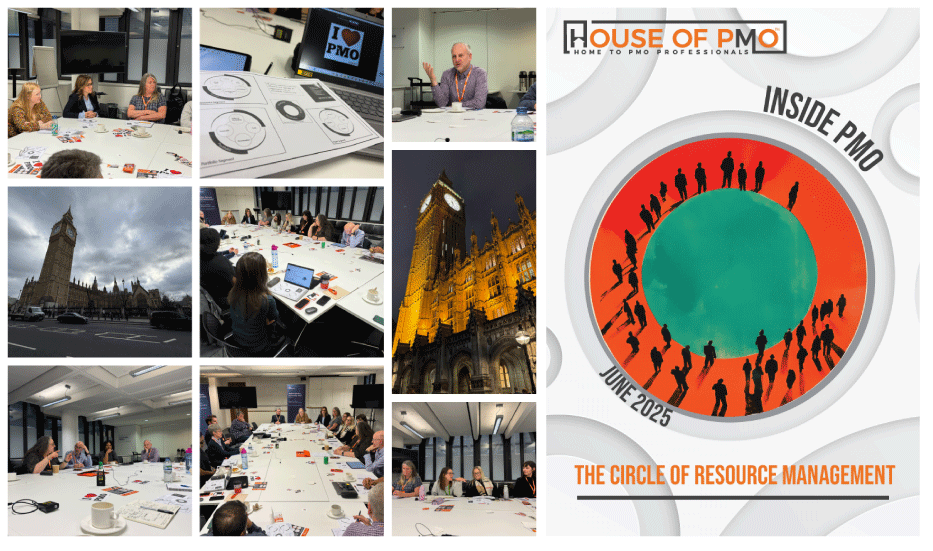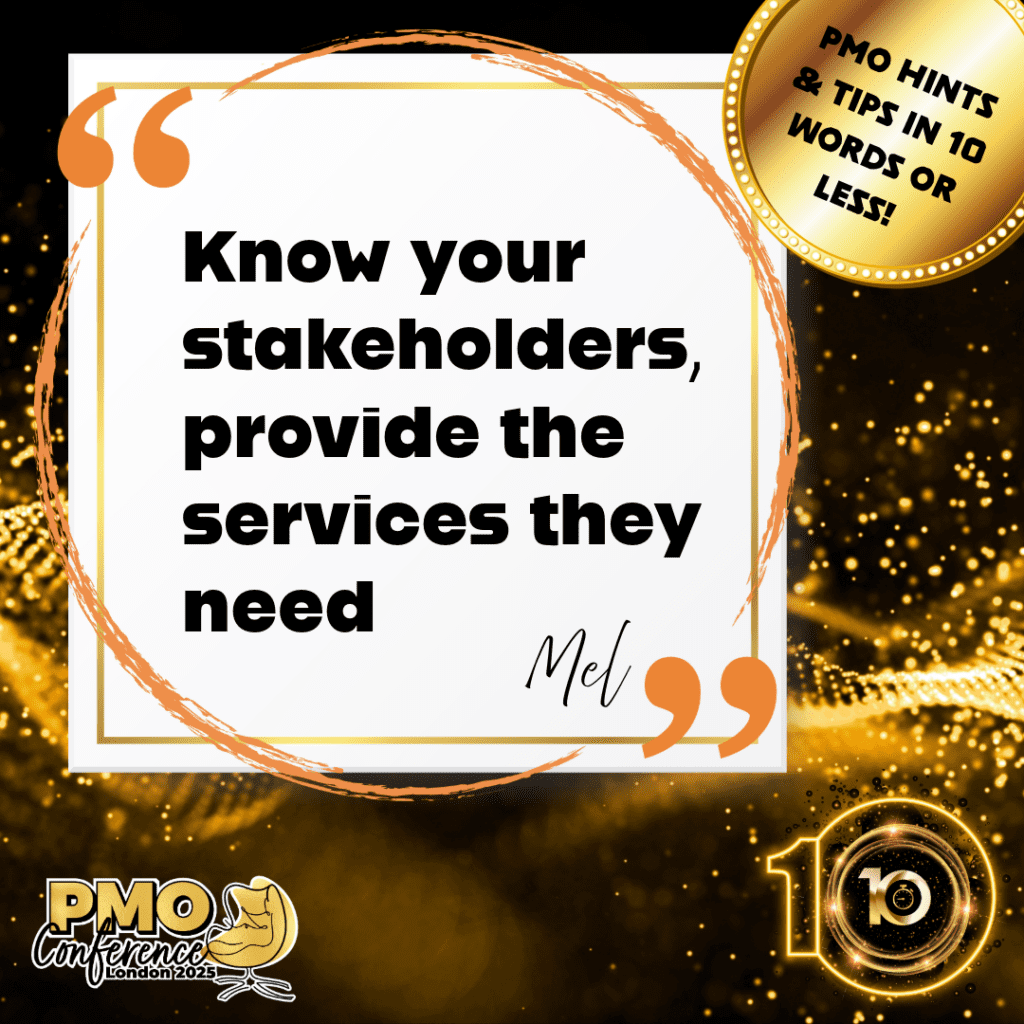Each year at the House of PMO, we bring you the top ten trends to watch out for in PMO over the coming year. We have been writing about trends and predictions in PMO since 2017. Back then, it was about understanding the real issues with PMO and value, the practicalities of supporting Agile-led projects, understanding strategy in your organisation and making small changes that have a big impact.
Fast forward seven years; where is PMO heading right now? Take a look at our predictions for 2024.
*If you are interested in the previous trends, why not have a [browse here.]
PMO Trends for 2024
Here are the new predictions for 2024: what will it have in store for us?
- Having the right energy and skill to bring together your PMO community of practice.
- Efficiency and productivity – a long-term continuous focus to drive PMO effectiveness, quality and value.
- Increased use of Generative AI – a PMO’s assistant.
- Positive steps forward in utilising project data analytics with data analysts in the PMO.
- Developing and evolving the PMO as a profession.
- Formalising what PMO means to you, your PMO, your delivery organisation, your business and your sector.
- Differentiating between the Service Catalogue, PMO Handbook and PMO Playbook.
- Utilising a structured framework and set processes for continuous improvement in the PMO.
- Incorporating practices that support environmental, social, and economic responsibility, aligning with the broader sustainability goals of the business.
- Increasing levels and presence of the PMO in organisations.
Recorded Session
 PMO Communities of Practice
PMO Communities of Practice
 Having the right energy and skill to bring together your PMO community of practice.
Having the right energy and skill to bring together your PMO community of practice.
Communities of practice are a great way for PMO practitioners to come together to enhance their knowledge and expertise. We frequently hear about PMOs within many different types of organisations who use communities of practice as a way to keep in regular contact with each other (especially with many still working from home) as well as using it as an informal learning approach.
Communities of practice – or other types of gatherings and get-togethers – require a lot of serious planning with a focus on different exercises and interactions designed to bring people together, contribute, share, and ultimately take away practical learning they can use back in their day-to-day work.
Bringing in guest speakers for presentation sessions, using gamification for team interaction, show-and-tells for spotlighting themes of work, ice-breakers, and facilitated conversations – all different approaches that get the most out of those precious hours together.
>> Get started with your community of practice with some great tips.
 Efficiency and Productivity
Efficiency and Productivity
A long-term continuous focus to drive PMO effectiveness, quality and value.
Efficiency, effectiveness, productivity – economic terms that don’t just apply to the highest levels in our organisations – it applies to the PMO as well. A PMO with well-defined processes, optimised resource utilisation, effective communication, data-driven decision-making, a commitment to continuous improvement, and a focus on maintaining high-quality standards throughout the project lifecycle – are just some of the ways the PMO can reduce waste and rework.
With conversations still being raised about the benefits of having a PMO and what good it brings to the organisation, it’s time to focus on these key business principles to demonstrate that the PMO is not just a support function but a strategic asset. It’s time to update your PMO mandate and update your objectives and goals for 2024.
 A PMO’s Assistant
A PMO’s Assistant
Generative AI
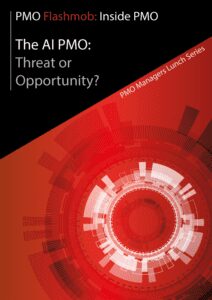 If there is one area of artificial intelligence which has taken the world by storm in 2023, it’s generative AI. Most of the world has heard of ChatGPT now, the most popular tool for generative AI. ChatGPT’s own answer to what generative AI is, “can autonomously create new content, such as text, images, or other forms of data, based on patterns and information it has learned from existing datasets”.
If there is one area of artificial intelligence which has taken the world by storm in 2023, it’s generative AI. Most of the world has heard of ChatGPT now, the most popular tool for generative AI. ChatGPT’s own answer to what generative AI is, “can autonomously create new content, such as text, images, or other forms of data, based on patterns and information it has learned from existing datasets”.
It’s the most easily accessible type of artificial intelligence today and is already being used in PMOs in many different ways. Those already using ChatGPT think it’s a great assistant, giving a “start for ten” when it comes to creating new policies, procedures and processes. Trying to identify risks for a certain type of project in a certain sector – ChatGPT will get you started with an example of the risk log or the risk management strategy.
In 2024, we will see an increased take-up rate of generative AI in the PMO
>> At the House of PMO we’re with you every step of the way on the AI journey, starting in 2020
 Data Specialists in the PMO
Data Specialists in the PMO
Positive steps forward in utilising project data analytics with data analysts in the PMO
One of the main objectives of the PMO is to support effective decision-making, and most PMOs recognise that good data can lead to great insights, which can bring about informed decisions that really drive project success. Recognising the important role of data, it is time to take it up a notch, utilising the advances in AI to bolster the reporting service offered by the PMO.
To improve, the PMO has to focus on collecting, analysing, and interpreting relevant data and information, yet PMOs have struggled to make headways in this area over the last few years. Partially, this is attributed to the organisation’s data culture and data strategy. From a PMO perspective, there is a lack of qualified, experienced and knowledgeable resource which can already be making advances with the tools already in hand.
With more training being made available, deeper study through schemes such as apprenticeships and an increase in higher education study in the area of data science – the PMO will be adding a headcount to the team which will focus on, what is arguably, the most important service it offers – reporting, and making it fit for purpose for a new age.
>> Start exploring the Data Analytics area of the Member’s Library
 The PMO as a Profession
The PMO as a Profession
Your help in developing and evolving the PMO as a profession
It feels like PMO as a profession is becoming more and more recognised. With International PMO Day launched in May 2023 and the news from the United States about the PMI buying PMO Global Alliance – plus numerous reports and surveys from tool providers, associations, consultancies and educators that PMO is increasing in numbers – it certainly feels like the tipping point has been reached.
For 2024 it is about capitalising on the tipping point, not letting apathy set in or waiting for others to take the “PMO as a profession” baton. The PMO profession needs development and evolution from all of us. The House of PMO focuses on supporting PMO practitioners in their development, to help bring them together so that learning, in its many forms, can be disseminated to everyone within the wider community.
What will be your aim for 2024, how will you help your profession in its development and evolution?
 What PMO Really Means to the People Who Matter Most
What PMO Really Means to the People Who Matter Most
Formalising what PMO means to you, your PMO, your delivery organisation, your business and your sector.
Throughout 2023, it has become increasingly clear that whilst PMOs are increasing in numbers and providing support and services which make a difference in the delivery of change in organisations – there is still a problem with the wider understanding and interpretation of what a PMO can do and what it is capable of doing.
We hear time and time again that whilst the PMO is useful and provides a set of benefits to different people and stakeholders, it is difficult to provide a clear, simple, consistent message that leaves people in no doubt about what to expect (and not expect) when working with a PMO.
The trend for 2024 is all about formalising that message – and it is a message which needs creating for you as individual PMO practitioners (what is it I do, when do I do it, how do I do it and ultimately why do I do this role?). It is also one which is needed from the PMO itself (a clear vision, mission statement, mandate, etc) and set up accordingly. The PMO also needs to formalise its messaging to the delivery organisation (here’s what we do for you and how we work with you) and the wider organisation (with any department that works with or accepts change). Finally, there is the wider industry in which your organisation operates. There are optimal ways in which to set up and operate PMOs in different sectors, such as the public sector, healthcare, education, financial services, start-ups etc.
In 2024, the House of PMO is looking forward to helping with the formalisation – watch out for sessions throughout 2024.
 Catalogues, Handbooks and Playbooks
Catalogues, Handbooks and Playbooks
Differentiating between the Service Catalogue, PMO Handbook and PMO Playbook.
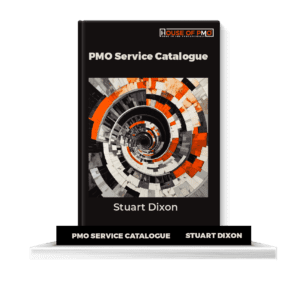 Listening to the many stories and insights from real-world PMOs over the last year or so, there is a difference in the types of approaches used to operate the PMO. For some PMOs who have adopted the service-based approach, the PMO service catalogue has been the best way to engage users of the PMO as well as determine how to provide the the right services and measure the success of the services too. This can sometimes be the only formal document or approach being used.
Listening to the many stories and insights from real-world PMOs over the last year or so, there is a difference in the types of approaches used to operate the PMO. For some PMOs who have adopted the service-based approach, the PMO service catalogue has been the best way to engage users of the PMO as well as determine how to provide the the right services and measure the success of the services too. This can sometimes be the only formal document or approach being used.
The PMO Handbook takes the service catalogue to the next level and tends to incorporate more of the wider project management practices, principles, processes and a whole raft of templates, checklists and tools. For many organisations, this takes the form of an intranet-based approach which might outline the project methods and associated resources needed to deliver. PMO handbooks also become localised for individual projects and team members too, allowing a flexing of approaches based on the type and size of project being delivered.
The PMO playbook – a term which has gained popularity hand-in-hand with the rise of Agile (a playbook refers to a guide or manual that outlines the principles, practices, and strategies for implementing Agile frameworks) – refers to the operation of the PMO. You can expect to see the objectives and goals of the PMO alongside how risk management, governance and assurance works. It will also include how the PMO team is managed, including performance reviews and training, plus the ongoing improvement of the PMO and the metrics and measures needed.
In 2024, PMOs will identify whether there is a need for all three of these in their current organisation, recognising that whilst all three perform a different function, not all of them may not be warranted.
>> You can take a look at the PMO Service Catalogue here
 Continuous Improvement in the PMO
Continuous Improvement in the PMO
Utilising a structured framework and set processes for continuous improvement in the PMO.
Within every mandate for PMO there is a line which talks about the need for continuous improvement in the PMO yet not many PMOs specifically have a designated approach or way to ensure that continuous improvement forms part of their roadmap.
In many PMOs, continuous improvement is something which is reactive, the realisation that something is no longer fit for purpose. There are too many examples of the PMO not recognising that the way project teams work is changing or that senior execs are not getting what they need from the reports – or worse still, the PMO being spotlighted for not providing many of the benefits it says it provides.
Continuous improvement is something which should be embedded into the everyday psyche of the PMO and involves regularly reviewing and enhancement of processes, methodologies, and practices to adapt to changing circumstances, identify efficiencies, and drive better outcomes.
There are numerous frameworks which the PMO can adopt to bolster their approach to improvements. PDCA (Plan-Do-Check-Act), Six Sigma, Kaizen, Lean and TOC (Theory of Constraints) are just some of the ones used in organisations today. One approach the PMO can look to use is that of value streams.
 Sustainability and the PMO
Sustainability and the PMO
Incorporating practices that support environmental, social, and economic responsibility, aligning with the broader sustainability goals of the business.
It’s a trend which is big for business now and will continue in 2024. Buzzwords today like corporate social responsibility, sustainable development, net zero, triple bottom line, and circular economy are not just about ethical and responsible approaches to doing business – it’s about customer demand, brand protection, risk mitigation, resource efficiencies and employee attraction and retention.
In project management, GPM (Green Project Management) and RPM (Responsible Project Management) are terms and approaches which have been around for a number of years and specifically focus on sustainability practices and goals at the project level. Perhaps it is easier to understand how and where sustainability has an impact on large construction projects, less so with smaller business startups. The fact remains that with sustainability there are goals, and where there are goals there is data, tracking, metrics, measures, insights – all of which is needed within project management and the delivery organisation. Sounds like a job for the PMO.
In 2023, we started to understand more about Net Zero and the role that some PMOs have started to play in the reporting of metrics. There will be maturity in practices in this area throughout 2024 which the House of PMO will be sharing.
On another note, the PMO itself can also think about sustainability – how the PMO itself can endure and thrive whilst incorporating sustainability practices. It is about aligning the PMO’s objectives with those of the organisation and even being mindful at a local level of everyday waste – post-it notes, anyone?
 Increasing Levels and Presence of PMOs
Increasing Levels and Presence of PMOs
Increasing levels and presence of the PMO in organisations.
Back in 2020, Gartner and PMI both provided surveys which showed that the presence of PMOs in organisations were on the increase. The number of PMOs within the organisation were increasing (project and programme level) and also the number of ePMOs – enterprise-level PMOs – were at 33% (up from 22% in 2018).
Whilst there is a lack of data on the numbers in 2023, what is clear is the project economy is here (see our keynote in London, June 2023) which is a term used to describe, “where organizations deliver value to stakeholders through the successful completion of projects, delivery of products, and alignment to value streams. And all of these initiatives deliver financial and societal value.” PMI
The numbers predicted are pretty phenomenal – . According to PMI, by 2027, some 88 million people around the world are likely to be working in project management, and the value of project-oriented economic activity will have reached $20 trillion.
Where there are projects, there is a need for the PMO.
What do you think?
Why not share with us your thoughts as you move into 2024, what is your PMO thinking about for the year ahead? Leave a comment below!

